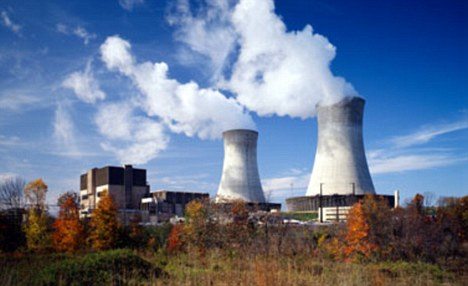The Abbott government is to consider the possibility of introducing nuclear power into Australia, in particular small modular reactors, as part of its new energy white paper.
An issues paper released by Industry Minister Ian MacFarlane on Tuesday notes that slow development in carbon capture and storage, and difficulties with hydro, means that nuclear technologies continue “to present an option for future reliable energy that can be readily dispatched into the market.”
It also says: “A growing area of global interest is in the use of small modular reactors, which have the potential to reduce the cost uncertainties and construction timeframes associated with current generation reactor designs.
“These reactors could be factory built, highly standardised and even used in locations without advanced infrastructure. The smaller size of the reactors may allow for more flexible deployment, making nuclear electricity available to isolated areas or countries with small or distributed electricity grid systems that cannot support conventional large-scale nuclear power.”
A spokeswoman for MacFarlane said the EWP process will be comprehensive. “However, the Coalition has no plans to pursue nuclear energy. Nuclear energy won’t become part of Australia’s energy mix without bipartisan and community support,” she said in an emailed statement.
Still, nuclear is a favoured option of many of the inner circle advising the Abbott government, who believe that renewable energy cannot deliver the capacity and reliability required of a modern economy. Both MacFarlane, and his predecessor, Martin Ferguson, are predisposed to the technology.
It suits their traditional view of centralised energy production and the hub and spoke model of the electricity grid, which relies on decade of sunk investment in transmission and distribution networks. These investments are now being challenged by new technologies such as solar and storage that could usher in more widespread micro-grids and distributed generation.
The last EWP – completed in 2012 – paid scant attention to nuclear, noting that it did not enjoy a “social consensus” in Australia, nor did it have much of an economic case, although it left the door open for future governments to consider it..
Pro-nuclear advocates have used assessment by the Australian Energy Technology Assessment, which claimed that nuclear was one of the cheapest options for low emissions technology.
However, the AETA assessment failed to calculate the cost of capital for nuclear. When someone did factor in the cost of capital – the UK government when it decided it wanted to build a new plant – the cost of nuclear took a different turn. The UK government, with few renewable options, will pay French and Chinese government-owned companies more than $150/MWh, indexed for inflation, for a new nuclear reactor in the south-west of England.
However, wind contracts being written for less than $50/MWh in the US and Brazil, and solar contracts being written for less than $100/MWh, and falling rapidly, the view of many, particularly in Germany, is that nuclear is pricing itself out of most markets.
Meanwhile, there is also talk that the Australian government will look to see if an auctioning system can be used to replace the current system of the mandatory renewable energy target, which uses certificates as a currency for new investment.
Auctioning systems have proved popular in countries such as South Africa, which has ushered in many wind projects, as well as solar PV and solar thermal, and in Brazil, where bidding in the latest auction saw 2.3GW of wind energy allocated at less than $48/MWh. It has also been deployed successfully by the ACT government, although this scheme also relies on the value of certificates.
The Conservative government in the UK is being urged to replace its system of certificates with an auctioning system, and a similar push was made in Australia last year by the Grattan Institute.
It is understood that the attraction for the new government is not so much the belief that an auctioning system can achieve lower prices and costs to the consumer, but in the ability to allocate capacity limits to certain technologies – and to renewables in general.
MacFarlane is on the record as saying that he is not a fan of having lots of “intermittent” wind and solar on the grid – notwithstanding the rapid development of storage options. The conservative government is also under a lot of pressure from within its own party and state governments to curtail the development of renewables in general, and wind in particular, and independents such as Nick Xenophon and John Madigan are also against wind energy and in favour of “banding” – reserving capacity for technologies such as “baseload” geothermal and marine energy, and solar thermal.
It is not yet clear whether the upcoming review of the renewable energy target will incorporate an investigation into capacity auctions. The terms of reference for the RET review have been delayed, presumably because of the federal government’s inability to repeal the Climate Change Authority, which conducted the last review and which has a statutory requirement to conduct the next review.
The Abbott government, however, wants that review undertaken by another party. It hasn’t yet said which, or how.










